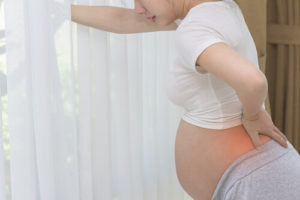Ruptured Uterus

The most serious risk associated with a VBAC is a complication known as a ruptured uterus. This occurs when a scar from a previous c-section tears open (typically those involving a vertical incision) either during the labor or delivery process.
The risks associated with this type of serious birth complication are extremely low (statistically speaking), as uterine ruptures occur in only about 0.5 percent to 1.5 percent of all VBACs. However, the outcome of a uterine rupture can have devastating consequences. If you or your baby were injured due to a risky VBAC resulting in uterine rupture, please call (800) 462-5772 for free to find out how Stern Law, PLLC can help.
What are the signs and symptoms of a uterine rupture?
There are a number of signs associated with a uterine rupture, such as:
- Vaginal bleeding
- Severe abdominal pain
- A rapid pulse
- High blood pressure
- Shock
- Chest pain
What are the risks of a uterine rupture?
Possible complications stemming from a ruptured uterus include:
- Fetal distress – If a uterine rupture occurs, there is a greater risk of an unborn child suffering from fetal distress, which occurs when his or her heart rate dramatically changes due to a lack of oxygen.
- Maternal hemorrhaging – A ruptured uterus can cause severe blood loss, resulting in the potential need for a blood transfusion and other life saving measures.
- Cesarean section – Should a uterine rupture occur, doctors and hospital staff must be prepared to swiftly deliver the child immediately to avoid potentially deadly complications associated with the condition.
- Sepsis – A uterine rupture increases the likelihood infection.
- Cerebral palsy
- Hypoxic-ischemic encephalopathy
- Periventricular leukomalacia – If your child, due to a uterine rupture, undergoes a sustained period of a lack of oxygen, he or she may develop this type of brain injury.
- Developmental delay
- Seizure disorders
- Paralysis
- Mental retardation
- Stillbirth – If competent medical attention is not sought immediately, a child has a 1 in 20 chance of dying as a result of a uterine rupture.
How is a uterine rupture treated?
Once a uterine rupture is suspected, there are a number of ways in which it can be treated depending upon the severity of the case. These treatment methods are as follows:
- Blood transfusion – Should excessive bleeding become an issue during a VBAC, a blood transfusion may be a life-saving method for a mother who has suffered from a large loss of blood.
- Hysterectomy – If a uterine rupture damages the uterus to the point where it cannot be saved, a hysterectomy may unfortunately be a woman’s only option.
- IV antibiotics and fluids – A uterine rupture places you at greater risk of an infection. It may be necessary for you to receive life sustaining antibiotics and IV fluids to compensate for the loss of blood.
- Monitoring -You will be monitored for a period of time after sustaining a post-rupture complication. During this time, you will be urged to eat nutritious meals and drink plenty of fluids. Moreover, you will likely be given iron supplements and advised to rest.
Unfortunately, litigation cannot turn back the hands of time and prevent what happened to your child. What we can do, however, is to fight for the rights of your child who, due to medical negligence, may have been deprived of the opportunity to have a normal life and now faces immense challenges. For a free assessment of your case, please call Stern Law, PLLC at (800) 462-5772.







